Featured Articles
Subscribe to Our Newsletter
Receive exclusive updates and insights directly in your inbox.
Receive exclusive updates and insights directly in your inbox.
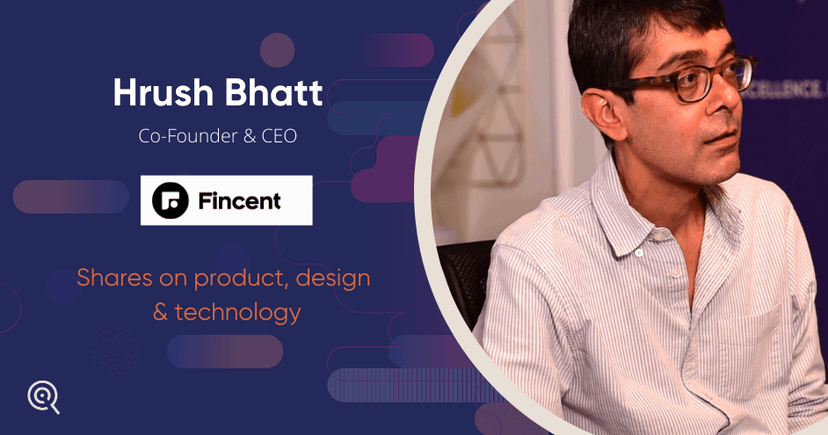
<b>Product & Design - will it work in a union or silo? <p> In the case of a handful of people, one person alone is able to handle multiple things but when a company grows and scales, doing so is a big mistake. It is next to impossible to wear the two hats at the same time. Over the long term, in order to continually build and release new products, a business needs three distinctive seats - <strong>product</strong>, <strong>tech</strong> and <strong>design</strong>. Although these three individuals are seated at the same table in an organization, their roles are completely different from one another. A product person’s role is to ensure the product meets the goals of the end user. A design person ensures that the goals are met along with the best user experience for the consumer. Whereas, the tech person ensures that the technology is best used to its capabilities, everything happens on time, the product/ design person do not overreach the product and so on. There are often a few overlaps on the decision table, either the three personas will agree to disagree or disagree to agree on a commitment made. In the case of the end product, if a single person double-hats the decisions, it will result in a win-win situation. On a day-to-day basis, a tech person and a product person work on projects that are distinct from each other. On one hand, when the product person is the liaison to every function in the business, he gathers valuable inputs from time to time. Every functional department of the business gives its input to the product person. The tech person on the other hand handles the delivery of the road map, product that is already there and the upcoming ones. And to ultimately ensure that the product is running smoothly and in synchronisation. It is unfair to have someone don both these hats at the same time. <b>What is Fincent providing?</b> Fincent came into being for the SMB market in the US. Part of Fincent’s revenue model is SaaS-based, we’ve all learnt the hard way that SaaS in India is a difficult market. I firmly believe that one should be able to charge a customer for the product, I believe in those business models & trust them. The problem Fincent is trying to solve is that at the SMB level, every business owner ends up assembling a patchwork of different points of solutions to run the financial aspects of their respective businesses. For example, one might use X for payroll, Y for accounting, Z for taxes and so on. These systems don't do a great job of talking to each other which essentially means that the business owner or someone on the team is constantly hopping between these points to keep them in sync making it highly challenging. This results in doubling or sometimes tripling the overall work because there is someone running in between these systems telling them what is where. To curb this situation, Fincent is building a full stack platform where SMB owners have a single pane of glass that can be used to deal with all the money in their business, be it bookkeeping, payments, taxation and so on. <b>Fincent - Design, future plans & how do consumers migrate from their existing platforms? </b> It is incumbent on Fincent to deliver a good design. One of the best part of working in the SMB space is that one has the freedom to design in a way that is consumer-centric. Consumers crave simplicity in a SaaS product and that is what Fincent aims for. Fincent focuses on the white-collar space, not retailers in particular. That being said, they too need reports from time to time to understand various parameters like profitable businesses, and client management, among others. Given it is a SaaS-based model, it is necessary to have a human element that would sometime help with decision-making or strategizing. Fincent works with fraction CFOs, if a client asks us for a CFOs insight we provide them with that expertise. In the US market, Fincent has co-opted Quick Books, it is the tally equivalent of the Indian market. Fincent is completely entrailed with Quick books, a business owner doesn't really have to look at Quick Books, all the data is in sync between the two. <strong>Watch the full episode here:</strong></p></b>
Read More
<p><p><strong>Rajesh Mishra shares,</strong><p>Okta is an identity security company, when people want to do any online or digital transaction, everybody is at risk. A digital persona is when a person uses a traditional desktop, laptop or mobile application. This persona may face problems as fraudulent activities can mess up digital systems. Privacy and cyberattacks are crucial and require a highly focused approach. It is about digital identity and the resources that are being accessed. Resources that can be accessed or the ones that have information are files, dropboxes, googles drives, and applications such as Slack or Salesforce. An element of trust is necessary when it comes to security. What is of question is if the user behind these screens is a human or a bot? Once the element of trust is established, the line of access to information is secured, Okta allows the user to make the necessary transactions. </p><p>Primarily, Okta caters to two audiences - B2B and B2C. B2B is what we call the “workforce identity” and B2C is what we call the “customer identity”. A use case of the former is - employees in a large organization will have lifetime (tenure of their employment) access to the resources within the company. The latter is the case where for instance, a consumer uses Uber or banking services. When that happens, the consumer is trying to access a limited amount of resources of the respective company. </p><p>When it comes to the technical stack, Okta is a 12-13 years old modern SaaS platform organization. In order to build both workforce and customer identity, it uses a lot of other platform building blocks, such as, hosting on AWS, and using their storage, network and database services. Okta’s basic building blocks, i.e., the software are written in Java and additionally there are other languages used to write codes for the devise-level software. The initial identity journey starts at this software level. </p><p>Okta uses a lot of application frameworks like UI among others. The company uses a lot of business software and developer tools on a regular basis, and Atlassian software is one of them. For heightened productivity, Google’s G-suite is used for general communications and emails. Zoom and Slack are other popular platforms used within the organization. It isn't just one software but a combination of an array of software that runs simultaneously. </p><p><strong>What drives the system?</strong></p><p>At a high level what is needed is a directory of the digital user representation, we model that in the directory software. The users are represented in these directories. Identity management has many protocols to follow and thus we have built our systems in a manner that applications and protocols are met. As a platform service company, we need to defend ourselves from bad actors. Thus we put a lot of effort to design disaster recovery and make the software extremely resilient and redundant. </p><p>Recently, Okta faced a highly coordinated attack from a bad actor who was trying to make money on the company. We noticed a discrepancy in our telephonic services, our system detected these activities and was able to stop them. This meant denying these requests that came our way. The system is automated, it flagged the act and within minutes of detecting it, the team was able to notice that it was suspicious activity. Importantly, besides the denial of service that led to a prevention of the act for the users of the company, we also succeeded in reducing the cost because it is a massive cost if it wasn't prevented in the first place. </p><p>Watch the full podcast, here:</p><h3 class="wp-block-heading"><strong>Authored by Richa</strong></h3><p>For more information, please reach out to the <a href="mailto:ma*******@pu***********.com">Marketing Team.</a></p></p><!-- wp:heading {"level":3} --><!-- /wp:heading --><!-- wp:paragraph --><!-- /wp:paragraph --></p>
Read More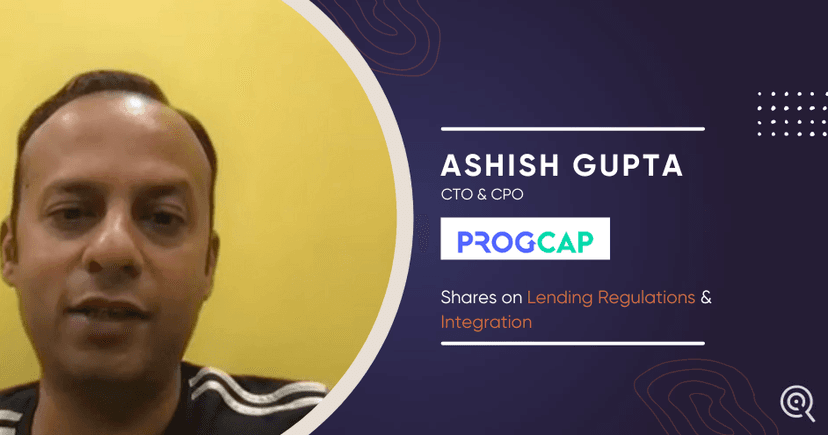
<h2>There are multiple parameters to be checked before lending<p> It is essential to go to the grassroots to see all the possible parameters of lending. Every partner that gets integrated with Progcap has a different parameter. A response to the same query may come differently - a simple example being, someone will say 1-0, and the other will say yes-no. Someone may not be able to give a state id but will be able to provide a state name. To make this easy, a list of all the superset parameters can be created and all the new ones that get added on; the task is to make the mapper between these two sets of parameters. No matter what the API from the partner is, no matter what the response is, mapping it will be possible. For example, a state’s id is a numerical id or a text, it can be flagged in the backend and a mapper can be performed between the company’s API and the partner API. This mapper is the fun part because every time it is performed, there are about 3 things that fall apart but the best part is only 3 instead of 97 fall apart. So every time a relationship is established, and integration is done, it is a highly customized code. The only difference is if there were 100 units of work in the first integration, it is going to probably be 50 in the second and even so less than 10 in the third integration. As long as this continues, the number of units of work can be predicted for the partner integrations that follow. Every company has a different protocol which revolves around integration. These protocols especially revolve around security in the financial industry. Some have APIs, some prefer tunnel integration, while others look at putting codes into their systems. An incredibly flexible system needs to be built to proceed at pace. </p><h2>Regulations and underwriting algorithms are two different things</h2><p> 9 out of 10 customers wouldn't know who their lending partners are. The interpretation of the regulation is different even though Progcap is regulatory compliant and so are its partners. Regulations are one thing while underwriting algorithms are another thing. Underwriting algorithms are primarily the logic on which lending partners approve or reject a customer’s case and this largely varies from bank to bank. Progcap largely understands how these external algorithms work along with all the algorithms that are in the system at Progcap. So when a customer comes in, it is possible to tell which is the right lending partner for a particular customer, and what is needed by the lending partner for this customer. All of these highly vary from one customer to another based on geography, size of business, amount of loan requested and so on. The beauty of this entire system is that it is a no-brainer system. One has to go by what the system says, if the loan amount is large, it will request more documents compared to a smaller loan amount request. There is no need for a salesperson to prompt what needs to be done as the system itself gives the output. In the backend, there is a known factor that this has a 99.8% success rate. If there is a rejection, it is rejected in the first stage. But once Progcap approves a customer, it is rare that a lender will reject, i.e, barely about 1-2 a month. The customer is far away from the regulatory environment and lending partnerships. The customer is a Progcap customer not individually represented by the lending partners. It isn't a marketplace for a customer, it isn't complicated for them. For a seamless process, we follow standard procedures. At Progcap, the terms and conditions for all the lending partners are the same irrespective of who the customer goes to. Progcap ensures that the job of mapping the gap between the consumer and the lender is looked after, which in turn makes the entire process seamless and smooth. The customer doesn't understand the complexity at the backend, that is the value Progcap brings in the engagement. </p><h3><strong>Authored by Richa</strong></h3><p> For more information, please reach out to the <a href="Marketing@purplequarter.com">Marketing Team.</a> Watch the full podcast here,</p></h2>
Read More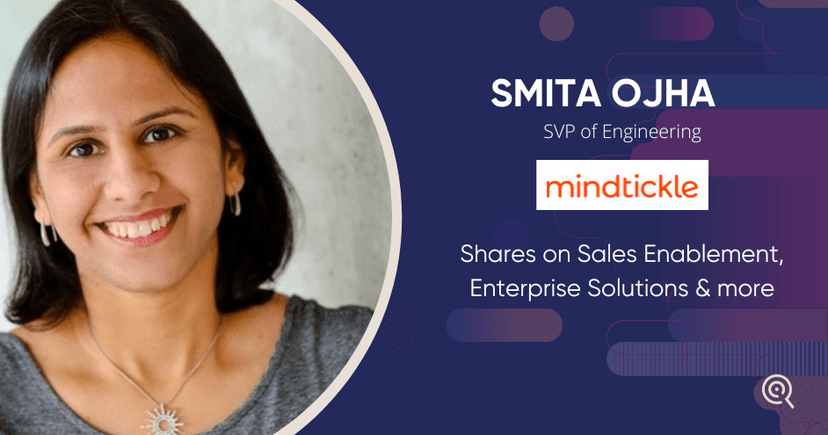
<h2>Scalability at Mindtickle<p>Mindtickle right now is at a phase where the systems need to be scaled. We are currently investing in building a platform that is scalable, can do data analysis, and can integrate with third-party systems and that’s where all the knowledge comes together. In my personal journey, there are three things that are common – one is enterprise solutions, second is data analytics and third is building large-scale systems. When a company needs to scale to its next level, all these three things need to come together and that is what we are doing at Mindtickle. </p><h2>Sales Enablement Verticals</h2><p>Every enterprise company has a sales division; if we look at the sales enablement platform, it covers four different verticals—the first is learning solutions, where salespeople are constantly learning about what to sell, what to pitch, and how to pitch. They need to continuously learn and complete certifications. <br> The second is the management and creation of content. There are various ways in which content is created—whether it is PDFs, PPTs, or videos; how you make this content engaging and useful for the learner while meeting the goals the company has set is extremely important.<br> The third is conversational AI. Over the last three years, a significant portion of sales communication has been taking place online and while these calls are recorded, the AI can note the key moments of the call and provide feedback to the salesperson.<br> The fourth vertical is revenue operations. It is where all the sales deals are stored, to learn how the deals are coming in and progressing and what the probability of the deal converting is.<br> These four pillars constitute the sales enablement platform and behind these pillars is a platform that is doing user management, storage, data analytics, integration, and workflows across these 4 pillars and that’s how the entire sales enablement industry comes together.<br> </p><h2>Integration of Platform</h2><p>There are multiple types of integration that happens across the platform- there is integration with the user – we call it directory sync. The second would be integration with content, called content sync (this content could be in Sharepoint, Dropbox, AEM or it could be in multiple places at the same time). The third integration is – Call AI which needs integration with Zoom, teams, calendar, etc. <br> When we look at enterprises, they will always have their own set of systems they are working with, to be a productive system we need to work with their environment and set of tools. That’s what every enterprise company also focuses on and that is what Mindtickle does with its solutions. It can get very difficult if the platform approach isn’t put in at the right point or the generalisations and abstractions are not applied at the right time. </p><h2>Data Analytics</h2><p>Data analytics is a key functionality to the sales pillar as there is data getting generated from the learner's activity feed, conversational AI calls, and the sales pitches being made. When you bring all of this data together, you can easily answer how effective a sales engineer is and what kind of extra coaching they would need and what's working for them. This can help build an effective organisation. For instance, an engineer would have some core skills like coding, debugging, and performance – similarly there are some core skills that would make a salesperson effective. How would you map the efficiency of a salesperson on a graph – you need data from different internal sources and external systems in order to map the effectiveness of the sales organization. So, that is where data analytics and right modelling come into the picture. This predicts whether revenue holds for an organization will be met or not and how will it all come together. Skill analysis is a continuous journey for a salesperson to learn and deliver the content and earn certifications. It is not a one-time onboarding thing, it is a continuous process. Companies hire great talent but they have to continuously train and coach the sales teams due to the nature of the job and its continuous change in trends. </p><h3><strong>Authored by Richa</strong></h3><p>For more information, please reach out to the <a href="Marketing@purplequarter.com">Marketing Team.</a></p><p>Watch the full podcast here,</p></h2>
Read More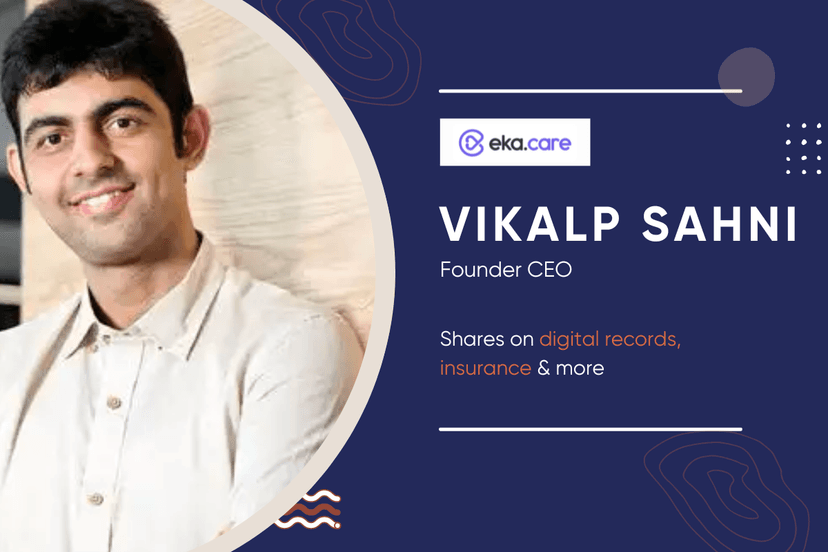
<p>At The Tech Factor by Roopa Kumar. The podcast was an interesting conversation between Vikalp Sahni, Founder CEO, eka.care and Roopa Kumar, Founder & CEO, Purple Quarter. During the conversation, Vikalp touches on how digital records are more than just scanning & scanning documents. He also talks about how eka can aid in making the health insurance process simpler. <h3>Digital records are more than just storing information online</h3><p> A personal health record app cannot just be a drop box or a Google Drive equivalent where you are just taking a picture or keeping a record or keeping a PDF and storing it there. The personal health record app should understand your vitals, should understand that how your haemoglobin is moving over a period of time and that is what we basically have built at eka. So when you scan a record, there is a technology that runs and there is a data science team behind it that OCRs that entire record. Be it a scan or a PDF document, the app understands the nuances of all your vitals. It makes sure that the record you received from Doctor Lal or the record that you get from Metropolis, all of that is standardized and then your health journey is created because that is where the technology can add value to a doctor's life or to the patient's life. It cannot be just a mere scan of your document, it has to be far deeper. Then the nuances on top of it, for instance, if you are Vitamin B deficient can I (eka) basically help you in creating a journey along with the doctors where you are eating right, getting yourself tested again and again so that you get better over a period of time. So that is a nuance that Technology has to solve from a health record perspective, it's just not the storage of the scan and the photo. It won't cut the chase from the impact perspective. </p><h3>Eka is an informative healthcare app</h3><p> Eka is an information company we are not a prescription company. We are not doctors and AI cannot replace doctors and their subjective understanding. We at eka, want to aid in this journey, we want to tell you that your heart rate at resting is constantly up as per the WHO standards or as per the regular standard and it has to be lower. Now how you react to it is something that you have to take a call on. It is you who has to go ahead and speak with your doctor or your physician and so on. See what we also felt is that - in health, it is very easy to be imposing and to instil fear. There is a very nice saying that when you are healthy you think of ten things but when you are sick you think of only one thing. It is very easy that when you are sick I can go ahead and manipulate you so that you end up paying and you basically end up being manipulated. At Eka, we tell people that we want to be authentic and not imposing. Never ever will we say that ok you should go ahead and get yourself tested for this. We will give you authentic information, now it's your and your doctor’s prerogative. In today’s time, lack of information is where people won't get the right outcome so that's a subtle difference between what we want to do at eka versus what is happening in the ecosystem. Definitely, eka will look to collaborate with insurance companies in the future. As you rightly said, getting life insurance is such a painful activity. Today in this world where I can buy auto insurance in 2 days flat with a single click and all, Health Insurance or Life Insurance is very difficult. A solution like ours can definitely help aid that for sure. </p><h3><strong>Authored by Richa</strong></h3><p> For more information, please reach out to the <a href="Marketing@purplequarter.com">Marketing Team.</a> Watch the full podcast here,</p></p>
Read More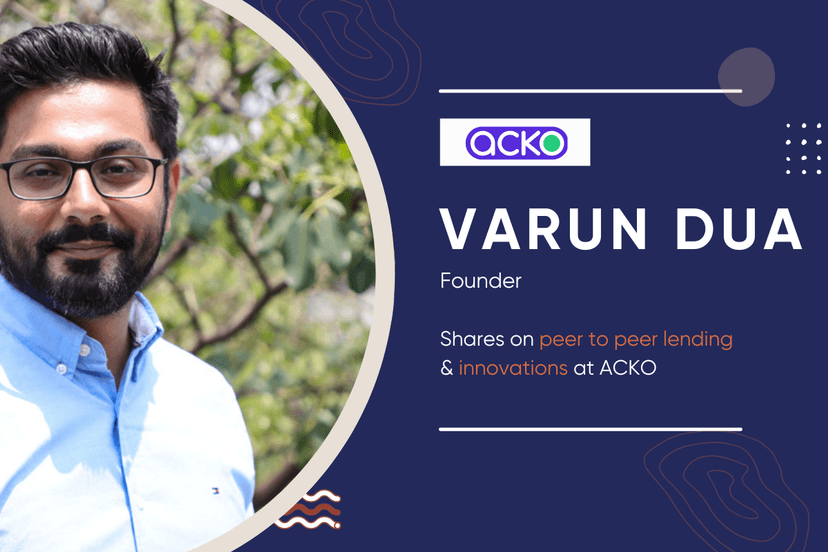
<strong>Varun shares,<h3><strong>Peer-to-Peer Lending</strong></h3><p> I've always wondered and thought about how peer-to-peer lending would work or if ACKO could play a part in this in some way. Frankly, I've been seeing what's happening in China with its peer-to-peer platform; it has scaled well and then just gets into a lot of complications. I do feel eventually it’ll happen, but that could be as far as 10- 15 years from today. Peer-to-peer is not a new model. Globally, a lot of companies are called mutual enterprises. Mutual is essentially peer-to-peer whereby a company that is managing it only keeps a small amount of processing fee. But the risk is pooled by others making it a peer-to-peer model. The company is only a platform probably taking about 1% to manage the entire thing. Now what is happening is that blockchain can remove this 1-2% of the processing fee too. The issue with insurance is that when you need the money you are desperate. For eg you're next of kin is in the hospital and needs 10 - 20 lakh for treatment; in a peer-to-peer network, building a trust that the money will be available at that particular time is the issue. Here what happens is that when you get insurance from Acko, I am being regulated by the regulator that regulator is being looked up by the government so there are so many levels of check on me that you are comfortable and that I will pay you. In a peer-to-peer situation, unless that trust factor is established at the scale and the level that when I need 20 lakhs, it’ll be available and it is not going to depend on an external factor, this model will not work. At the end of the day, we all need some security right? To reach that level, it’ll take some time or even for people to develop that level of trust and for regulators too. If today I put some money in mutual or peer-to-peer platforms and don't get the money tomorrow, the regulators will intervene. I don't know how will it works, even if it does I think it will be much longer, definitely not in the next 5-6 years. </p><h3><strong>Innovations at ACKO</strong></h3><p> One of the things we as a team at Acko are really excited about are EV - electronic vehicles because we believe that with EVs the face of insurance will be completely different. Now we’ve got a team that specifically looks at the EV segment. In a combustion vehicle or a regular petrol car or petrol bike, whatever be it, hardly there are any moving parts in the vehicle. 40% of the parts of this vehicle is the battery, therefore the risk has changed. It may become a battery warranty insurance whereby the battery will last as opposed to the overall vehicle. If the battery goes off then the vehicle is of no use. Imagine a 10 lakh car, and 40,000 of it is the battery. If something goes wrong then the claim becomes 40,000 in some sense. Whether the battery will last, will it catch fire, how is the battery being used, what is the load charge, what are the risks, etc.. are the questions to be answered. All our basements today and indefinitely 5 years, from today, will have sockets for charging these vehicles. Will those basements catch fire because the wiring isn't done well? Maybe. We did a bit of research and found that charging as few as 10 cars in the basement would pull the whole grid down unless the power is done well. In India most of our basements have sewage issues, there would be some or the other pipe leakage and so on. So much could go wrong you know, this entire ecosystem could completely change. One of the things we are excited about is - what we monitor. Do we monitor the battery or do we integrate with the manufacturers of the EV? What would the insurance policy even look like? This is something we don't know about but are really excited about it. </p><h3><strong>Mumbai to Bangalore journey</strong></h3><p> Our simple thought was we couldn't scale engineering in Mumbai, we weren't getting the kind of people we wanted. We ourselves dint learn enough to know the kind of people we needed or were available. It wasn't just that we dint find talent but also that our entire worldview was limited to that talent. When we were contemplating, we were clear we wanted to move out of Mumbai, not necessarily to Bangalore but definitely out of Mumbai. We evaluated and had 4 options - would it be Hyderabad, Bangalore, Pune or Gurgaon? We decided that because we are moving out, let's go to the hot belt, anyway everything was going to be alien to us. We were figuring out everything from scratch. One of the best decisions Acko ever took was to shift to Bangalore. You (Purple Quarter) were instrumental in hiring Vish. I don't think we would have hired that kind of talent in Mumbai. The talent too somehow back gravitates to the location. It isn't just the tech talent but also the business talent like pure p&l folks who know how to partner with product and technology teams because they have been groomed in a particular ecosystem, and worked at companies where they talk the same language. Most of these folks in companies like ours are always going to be cross-functional. Unless the product, P&L and the tech guys are going to work jointly, we aren't going to be able to deliver much. And if the P&L person knows how to partner with product n tech, who knows what product is delivered what technology is possible and what isn't, then even those business guys can bring you that revenue. Getting this talent is difficult in Mumbai, Mumbai is great for marketing talent, legal services talent, and core financial services talent. If you really want to build a tech-oriented company and scale, Bangalore is the place! Maybe to some degree, I’d say even Hyderabad isn't a bad choice. </p><h3><strong>Authored by Richa</strong></h3><p> For more information, please reach out to the <a href="Marketing@purplequarter.com">Marketing Team.</a> <strong>Watch the entire episode here,</strong></p></strong>
Read More